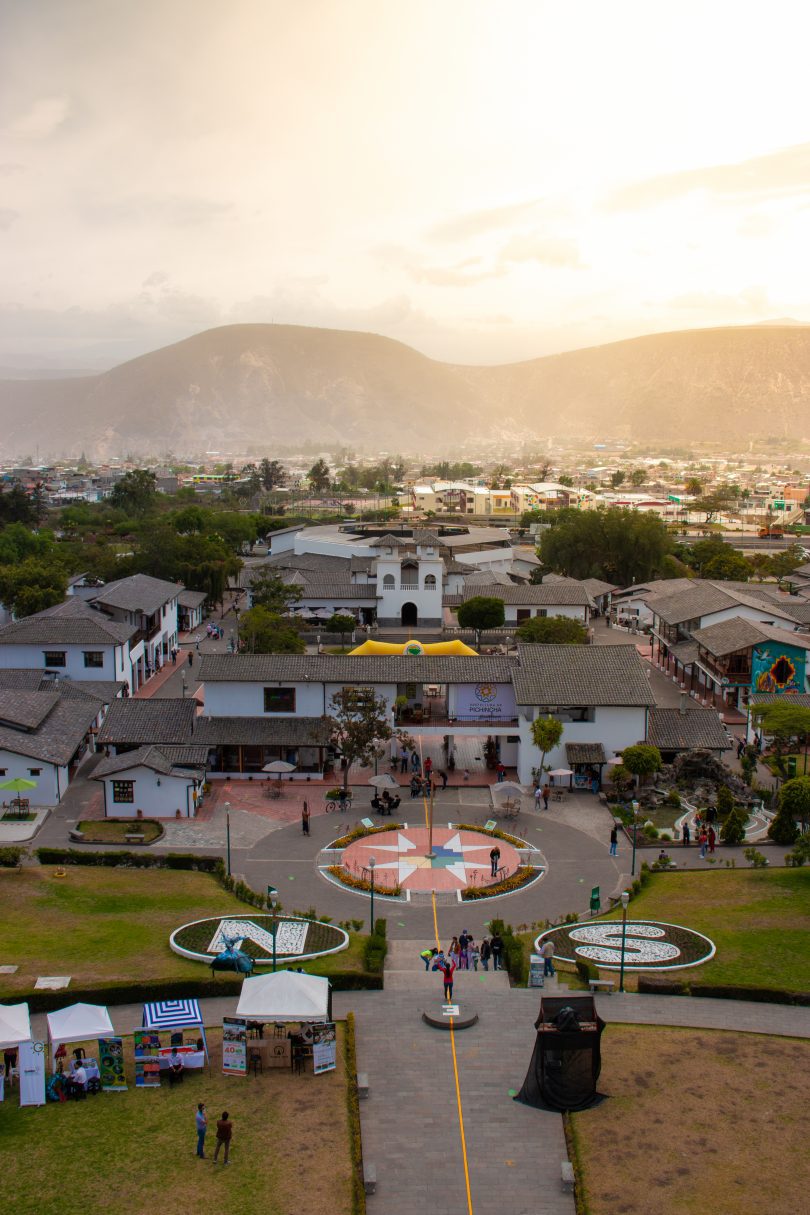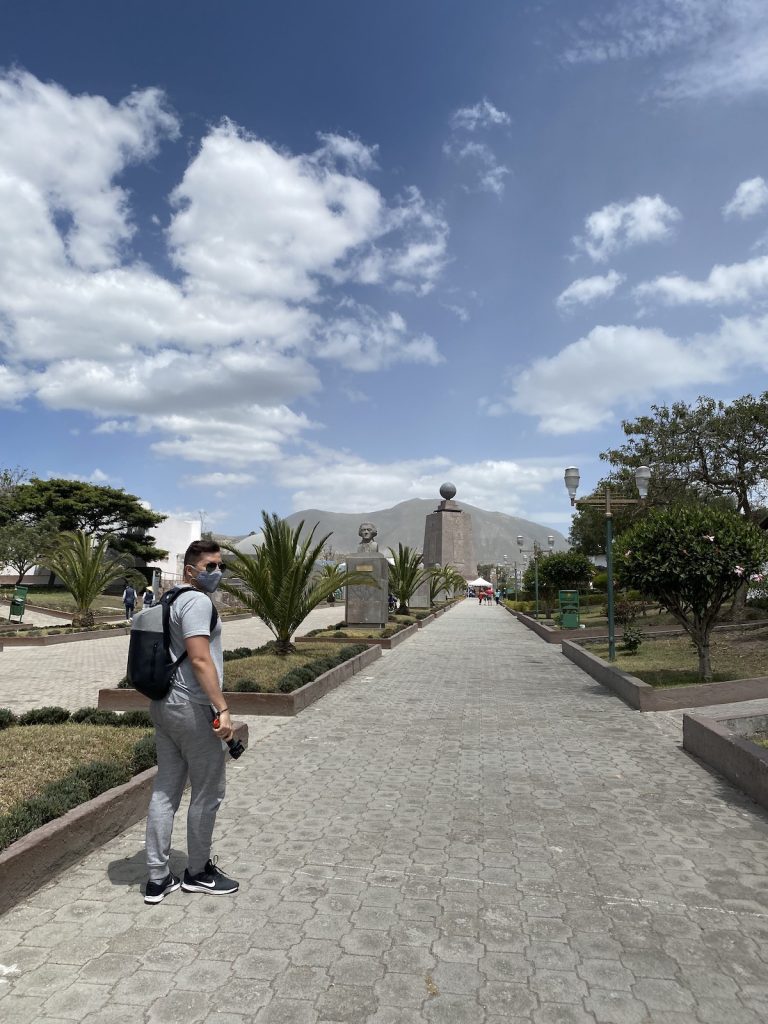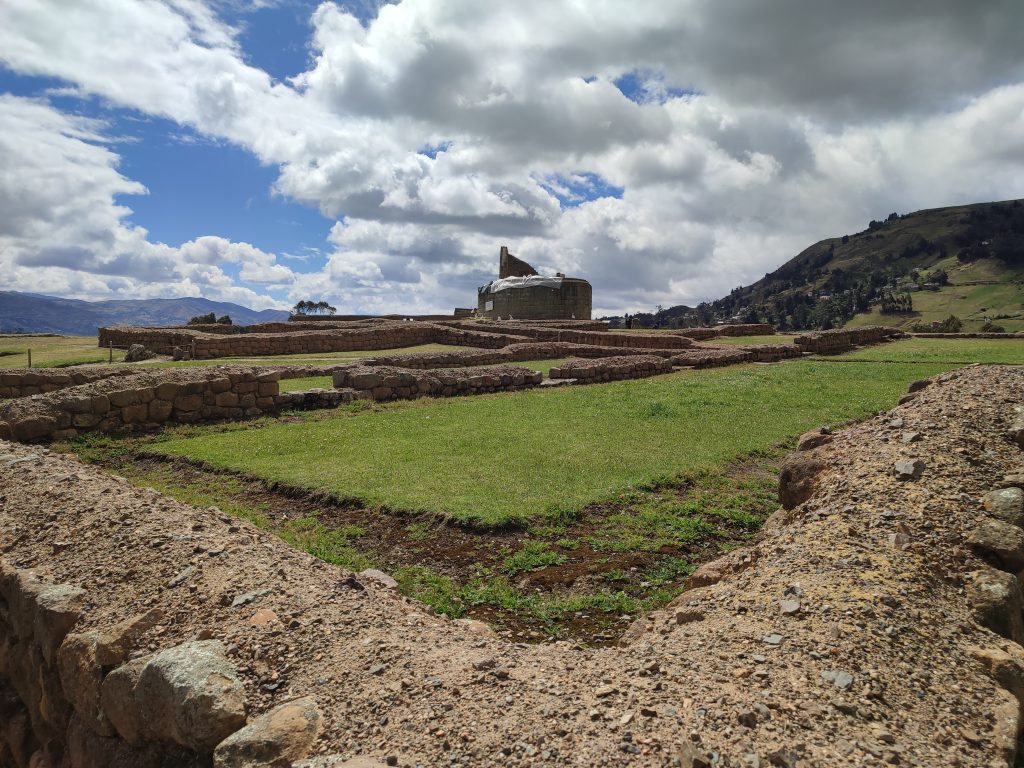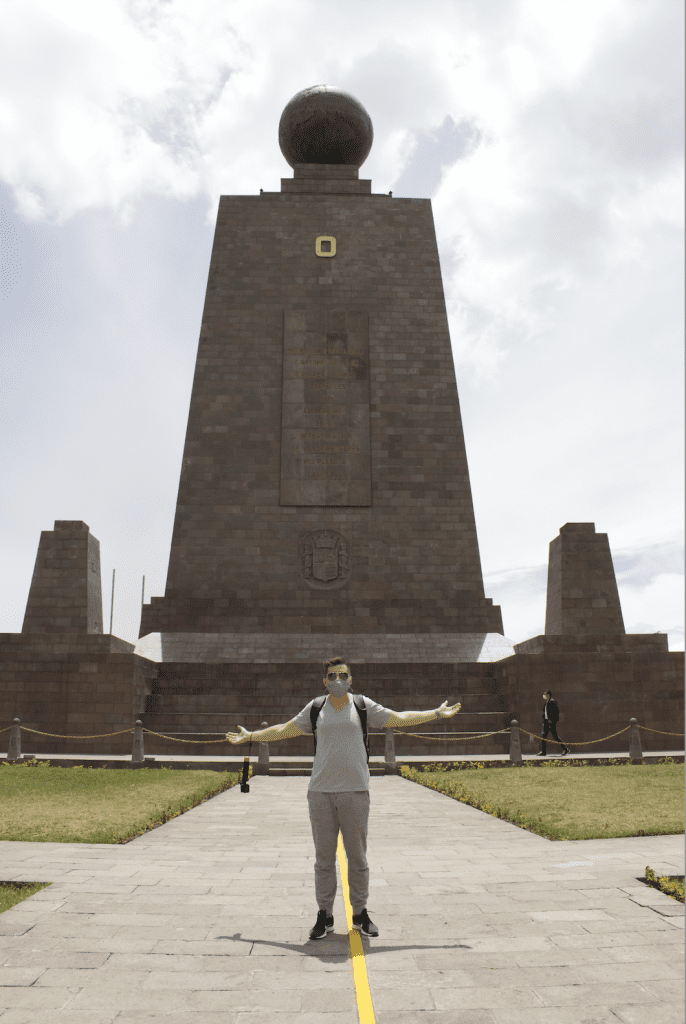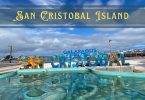The name “Ecuador” was derived from a notable geographical feature – the equator. The equator is a hypothetical line located at 0 degrees latitude. This line also divides the Earth into two hemispheres (Northern and Southern Hemispheres). Ecuador is a country that straddles the equator. Hence, it is vital to its identity and history.
The Middle of the World
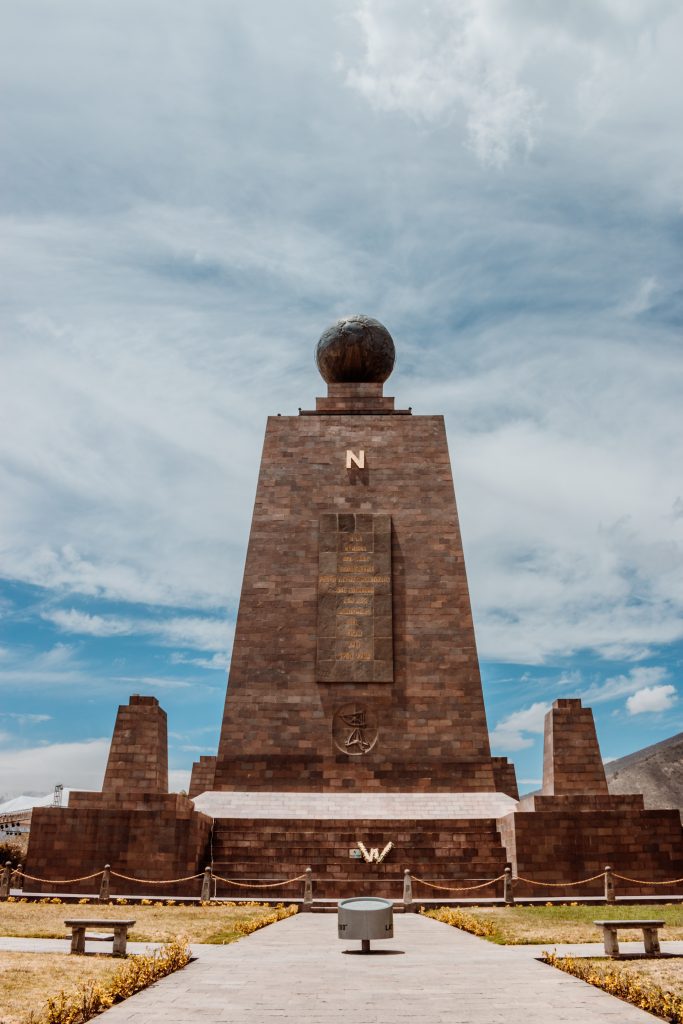
“Middle of the Earth”, Quito, Ecuador
The name “Ecuador” originates from the Spanish word for the equator. The country takes pride in its central global location, commemorated by a monument located approximately 24 kilometers from its capital, Quito, in San Antonio de Pichincha.
Despite the historical significance of the Mitad del Mundo marker, a monument celebrating Ecuador’s position on the equator, modern GPS technology has revealed an intriguing revelation.
The marker’s actual location isn’t precisely on the equator; instead, it lies a short distance away, approximately a 10-minute walk, at the Intiñan Solar Museum. This discovery adds an exciting twist to the country’s association with the equator and its role as a unique geographical reference point.
The Spanish Conquest and Colonial Era
Ecuador was once inhabited by various indigenous communities, such as the Inca and the Caras, who had their own names for the region.
However, everything changed in the early 16th century when the Spanish conquistadors arrived, searching for new lands to conquer and exploit.
During this time, the Spanish explorer Francisco Pizarro embarked on an expedition and encountered the equator during his journey through the Andes Mountains.
In 1532, the Spanish expedition led by Pizarro successfully conquered the Inca Empire, and the region became part of the Spanish colonial empire.
With the Spanish colonization, the region began to be referred to as “Ecuador” due to its location along the equatorial line.
The Importance of Latitude Zero
The equator’s significance extends beyond a mere geographical line; it holds particular astronomical and navigational importance.
Before the advent of modern technology, the accurate measurement of latitude was vital for maritime navigation and determining one’s location on the globe. The equator, being the most accessible line of latitude, became a crucial reference point for sailors and explorers.
French Geodesic Mission – Measuring the Earth
The exact location of the equator was not accurately known until the 18th century. In the mid-18th century, French scientists led the Geodesic Mission to Ecuador to determine the Earth’s true shape and size.
Under the guidance of Charles Marie de La Condamine and other notable astronomers, the mission carried out extensive measurements and calculations around the city of Quito.
In 1735, the Geodesic Mission conducted a landmark experiment at the equator, verifying its location with remarkable precision. This scientific endeavor concluded in 1739, which further solidified Ecuador’s association with the equator and contributed to the country’s identity and naming.
Modern-Day Ecuador

DCIM100GOPROGOPR1224.JPG
Now officially known as the Republic of Ecuador, the country gained independence from Spanish rule on May 24, 1822, under the leadership of South American revolutionary hero Simon Bolívar.
The name “Ecuador” was retained after independence, symbolizing the nation’s historical connection with the equator, which continues to be a source of pride and interest for Ecuadorians and visitors alike.
Conclusion
Ecuador’s name, derived from the Spanish word for the equator, pays homage to its remarkable geographical location.
As a nation straddling this significant line, it proudly celebrates its position with the Mitad del Mundo monument. While modern GPS technology has revealed a slight deviation, the allure of standing on the equator remains intact, enticing travelers worldwide to experience Ecuador’s enchanting wonders firsthand.
Today, Ecuador is a vibrant nation with a rich cultural heritage and natural wonders that attract travelers from all corners of the world. Plan your trip to Ecuador and discover the magic of being in two hemispheres at once!

